12 incredible dinosaur finds that sold for a fortune
Dinosaurs that sold for a fortune
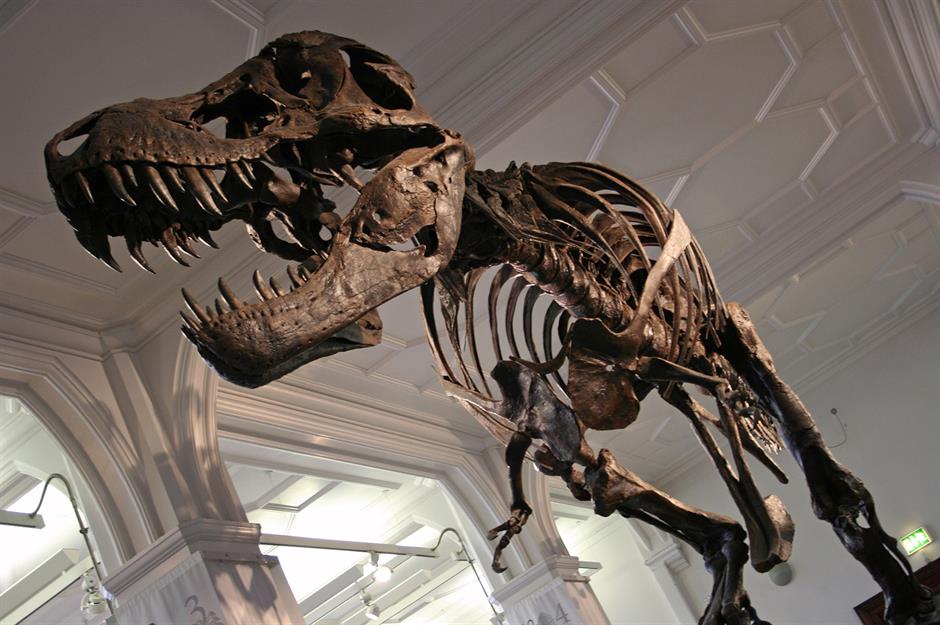
Dinosaurs have long fascinated humankind, revealing secrets about prehistoric times and the species that once roamed the earth. Yet buying them is no longer solely the realm of museums and research organisations.
A growing number of wealthy individuals have taken an interest in buying dinosaurs for their private collections, sparking debates about whether they, if anyone, should own these historically important artefacts.
As a recently discovered fossil breaks auction records, read on to discover the stories behind 12 dinosaur finds that sold for staggering sums.
All dollar amounts in US dollars
Freya the Harpocrasaurus: $163,000 (£126k)

The Harpocrasaurus stibengi was a duck-billed dinosaur that lived 75 to 67 million years ago and was almost as big as a Tyrannosaurus rex. This specimen, measuring around 25 feet (7.6m) long and 10 feet (3m) high, is virtually complete.
Discovered in Montana in the 1990s, "Freya" was displayed at the Emmen Museum in the Netherlands, where she was given her name. Then, in 2016, the Emmen Zoo decided to sell its collection of dinosaurs and fossils at Summers Place Auctions in Billingshurst, England.
Freya the Harpocrasaurus: $163,000 (£126k)
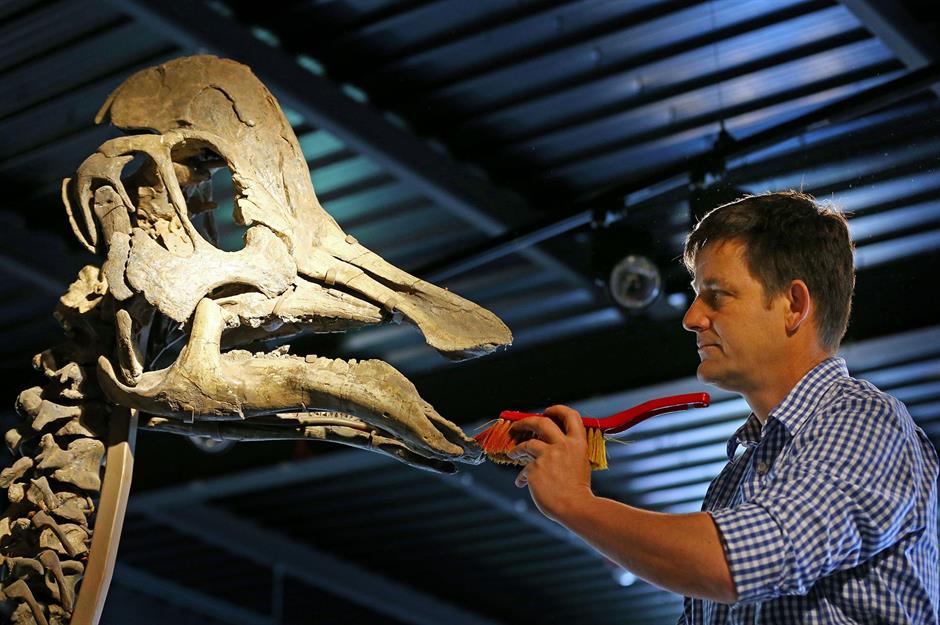
Freya was the star of the show. She sold for £95,000 to a private client, the equivalent of $163,000 (£126k) in today's money. Other items sold included a rare Hoplophoneus – a sabre-toothed cat – and the skeleton of a predecessor of today's horses, the Eohippus.
Misty the Diplodocus: $703,000 (£544k)
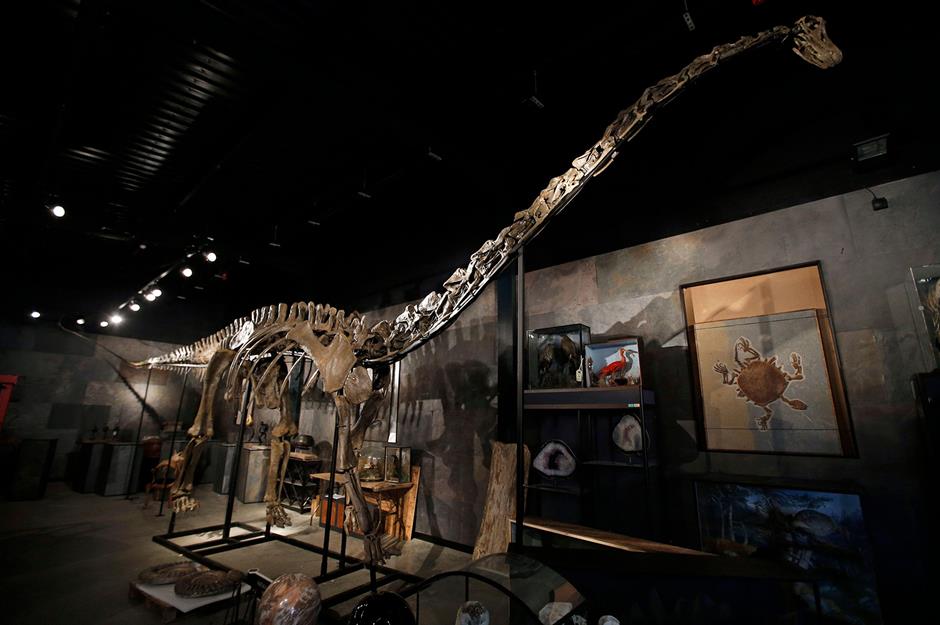
In 2009, German palaeontologist Raimund Albersdörfer was excavating a quarry in Ten Sleep, Wyoming when he told his sons to go off and explore so he could get on with some work. Sons Benjamin and Jacob returned later and told their dad they had found a bone so big they couldn't carry it.
The bone turned out to be a giant and very rare Diplodocus skeleton, which they nicknamed "Misty" after the mystery quarry it had been found in.
Misty the Diplodocus: $703,000 (£544k)
Extracting the fossil, which was embedded in the rocks, was no easy feat and the challenge of getting the dinosaur out without smashing any of the bones made it a painstakingly slow operation. Successfully removed, the bones were mounted on a frame in the Netherlands and then shipped off to England.
Misty now stands 14 feet (4.3m) high and 65 feet (19.8m) long and sold for an impressive £400,000 at Summers Place Auctions in November 2013. That's an impressive $703,000 (£544k) in 2024 money.
The Triceratops from South Dakota: $918,000 (£710k)
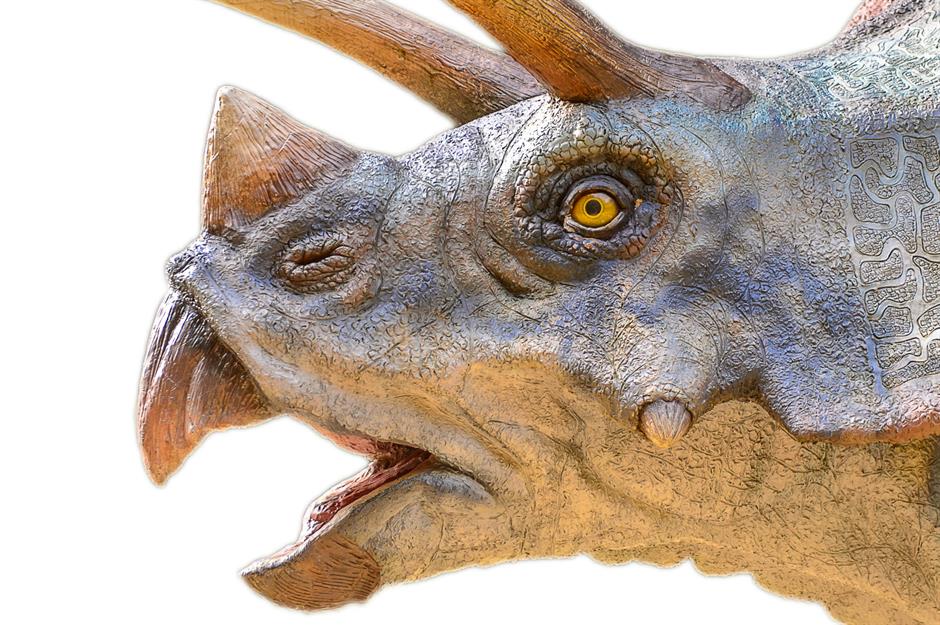
A Triceratops found in Harding County, South Dakota in 2004 stunned experts. The skeleton measured a massive 19 feet (5.8m) long from head to tail, and a towering 12 feet (3.7m) tall. The skull, which generally represents around 30% of a dinosaur's entire skeleton, was remarkably intact and only required a few minor restorations.
Most Triceratops found in museums are composed of multiple different dinosaurs, expertly put together to appear as one, but this one was found 75% complete, making it extremely valuable.
The Triceratops from South Dakota: $918,000 (£710k)
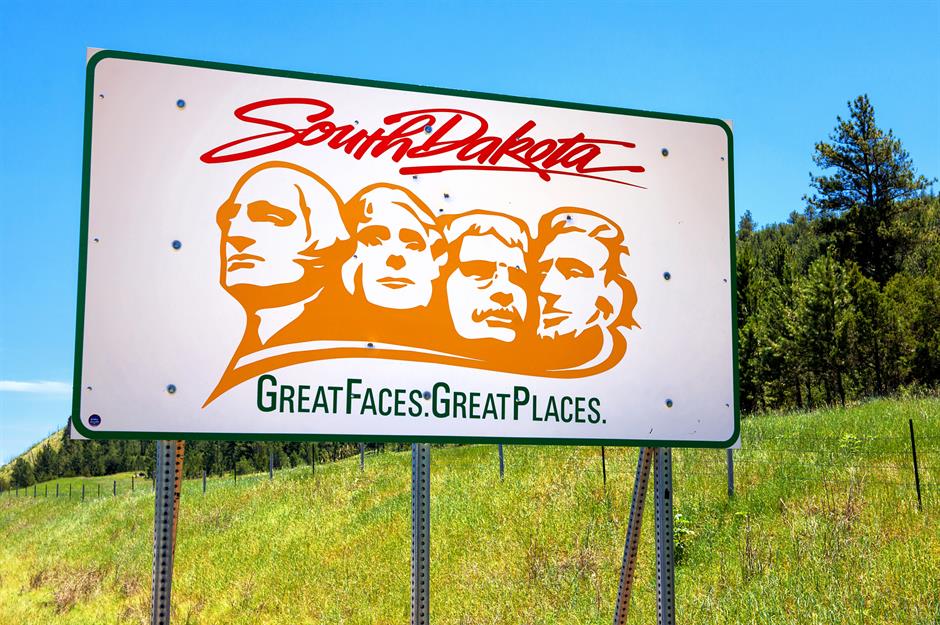
The huge dinosaur was sold at Heritage Auctions for $657,250 in June 2011, or around $918,000 (£710k) in today's money.
Interestingly, the Triceratops is the official state fossil of South Dakota.
The trophy dinosaurs: $1.9 million (£1.5m)
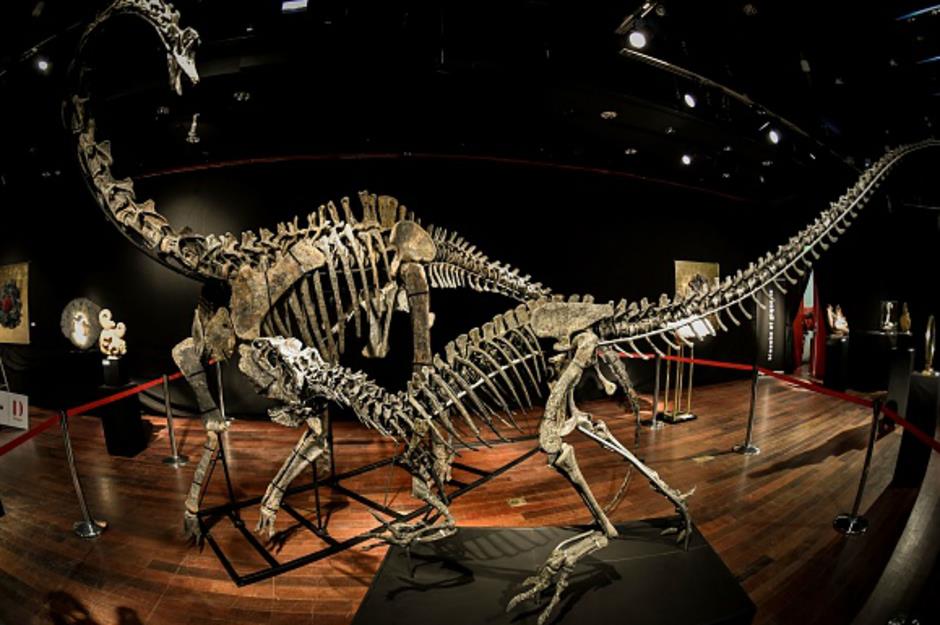
In April 2018, the Paris auction house Hôtel Drouot had a very good day when it sold two dinosaurs to the same bidder, a millionaire foreign collector.
The dinosaurs made headlines around the world, with fossil sales expert Iacopo Briano commenting: "Dinosaurs have become cool, trendy – real objects of decoration, like paintings", when he spoke to AFP before the auction.
The trophy dinosaurs: $1.9 million (£1.5m)
The specimens were a Diplodocus, measuring 39 feet (11.9m) long from nose to tail, and an Allosaurus, much smaller at 12.5 feet (3.8m) long. Both roamed the Earth around 150 million years ago during the late Jurassic period.
They sold for more than €1.4 million each, the equivalent of $1.9 million (£1.5m) today. They were purchased as a pair by an unnamed buyer, with Hôtel Drouot commenting that it was "exceptional" for dinosaurs to command such a high price.
The mystery dinosaur: $2.7 million (£2.1m)
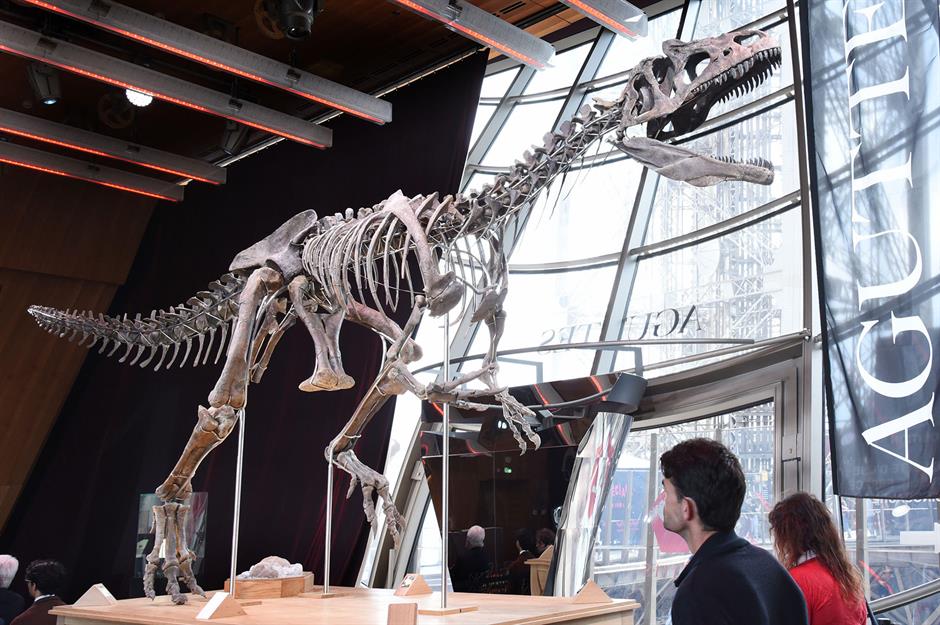
A 150 million-year-old dinosaur discovered in Wyoming went under the hammer at Aguttes auction house in Paris in June 2018. The fossil measured 8.5 feet (2.6m) tall and 28.5 feet (8.7m) long and was reported to be in good condition, with about 70% of the skeleton intact. But this was a dinosaur with a difference.
Palaeontologists had been unable to identify what kind of dinosaur it was, only describing it as a carnivorous theropod. Experts said the fossil resembled an Allosaurus, a dinosaur that reigned supreme during the late Jurassic period. However, several differences, such as the shape of the pelvis, skull, and teeth, meant that it could be a genus of dinosaur that scientists had never seen before.
The mystery dinosaur: $2.7 million (£2.1m)
There were calls from the Society of Vertebrate Paleontology for the sale to be cancelled so that palaeontologists could continue to examine the mystery fossil and determine exactly what type of dinosaur it really was.
However, the sale went ahead, and the dinosaur was bought by an unnamed art collector for €2 million, or around $2.7 million (£2.1m) in today's money.
The fighting pair: $3.8 million (£2.9m)
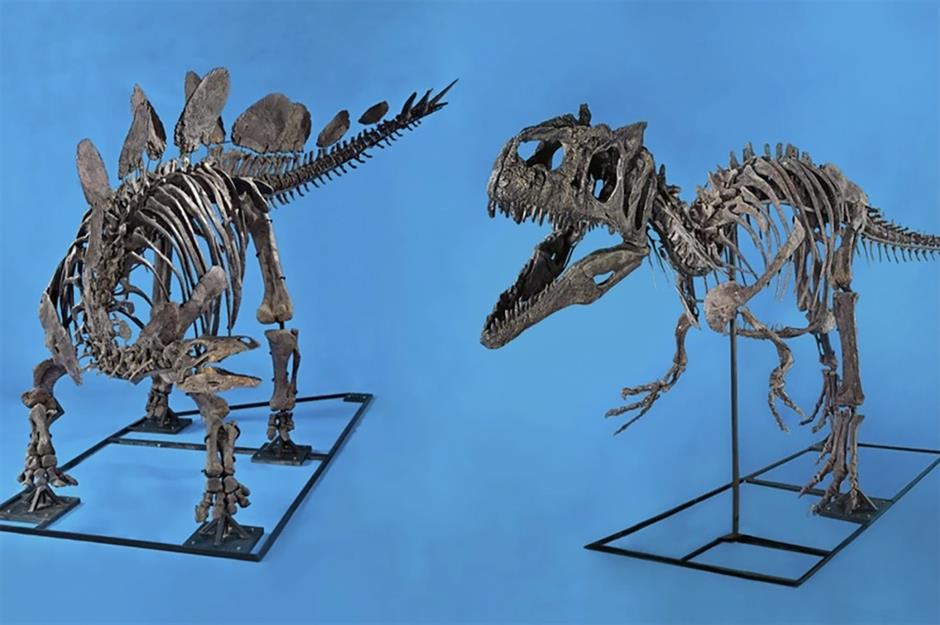
Palaeontologist Henry Galiano made a most unusual discovery in a quarry in Wyoming in 2007: a fossilised pair of dinosaurs locked in battle. The fighting dinosaurs turned out to be an Allosaurus and a Stegosaurus, with the jaw of the Allosaurus wrapped around the leg of the Stegosaurus.
The fighting pair became media stars when they were sold together at Heritage Auctions for $2.7 million in 2011, or about $3.8 million (£2.9m) in 2024 money. Huge crowds showed up at Fair Park in Dallas to catch a glimpse before they went under the hammer.
The fighting pair: $3.8 million (£2.9m)
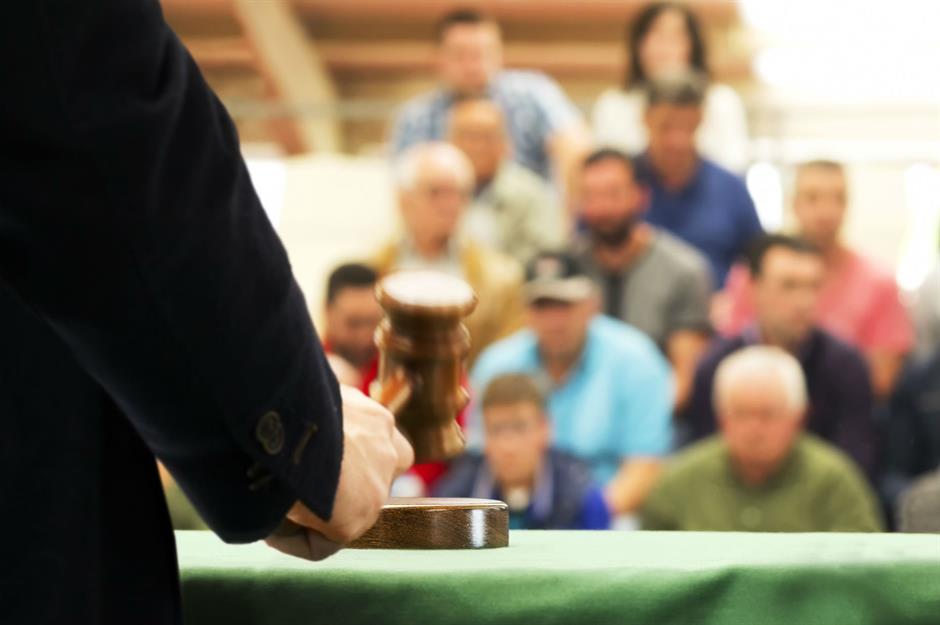
The fighting pair were bought by an unnamed museum outside the United States.
"I'm ecstatic that 'the fighting pair' found such a great home," David Herskowitz, director of natural history at Heritage Auctions, said. "These are important and iconic Jurassic-era specimens, which science did not even know existed together at the same time, and now they will be going to a final destination where the public will get to enjoy them and where they will be of maximum benefit to science."
Big John the triceratops: $8.9 million (£6.9m)
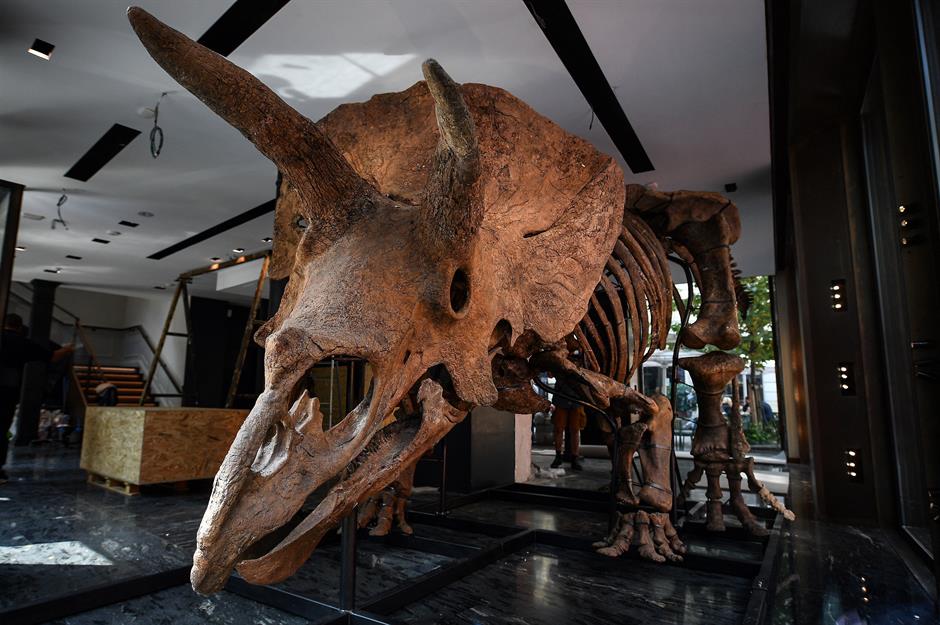
Another Triceratops discovered in South Dakota, "Big John" was named after the owner of the land where it was found. Measuring 23 feet (7.15m) long and 8 feet (2.7m) tall, Big John is the largest Triceratops skeleton in the world.
It consists of around 200 bones and is more than 60% complete, while its skull is more than 75% complete. The dinosaur is thought to have died in an ancient flood plain around 6.6 million years ago, with its bones preserved in mud ever since.
Big John the triceratops: $8.9 million (£6.9m)
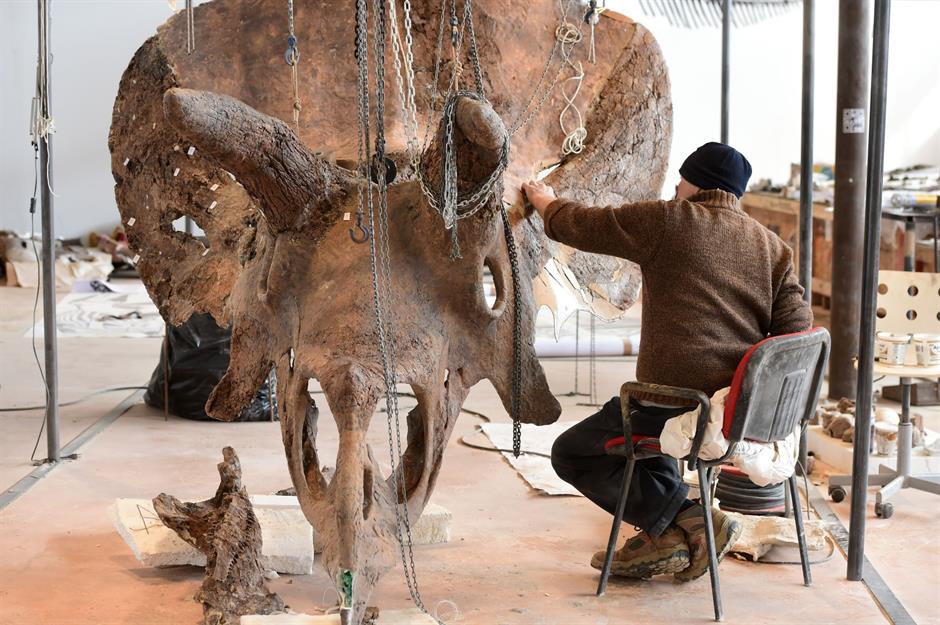
Big John was restored in Trieste, Italy before moving to the Drouot auction house in Paris.
The skeleton was given an estimated guide price of between $1.92 million and $2.88 million but smashed expectations, selling for a whopping $7.7 million. That's around $8.9 million (£6.9m) in today's money.
Prince, Apollonia, and Twinky: $11.5 million (£8.9m)
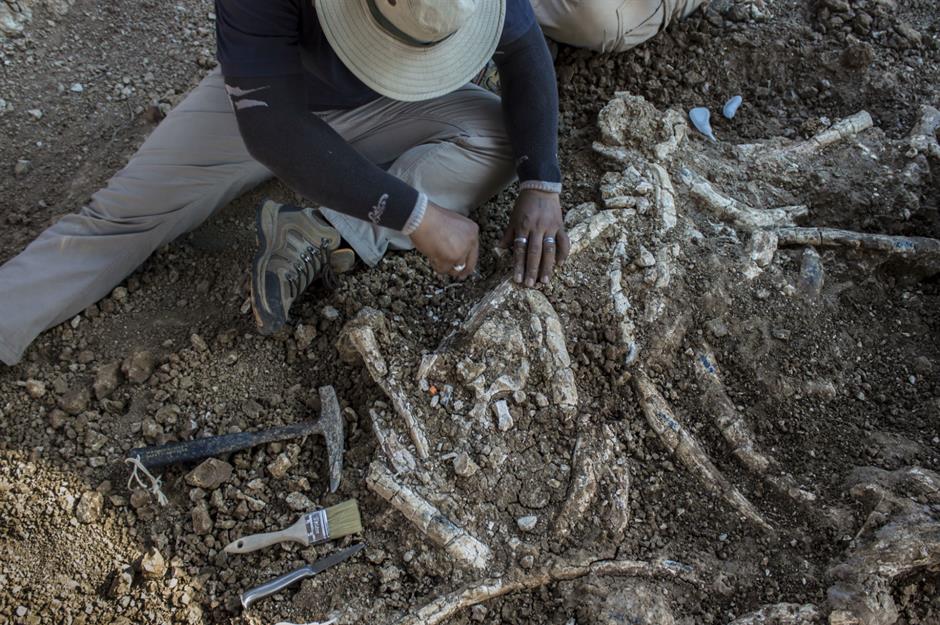
A trio of Diplodocid sauropod dinosaurs were found between 2007 and 2010 in a quarry in the small town of Ten Sleep in the US. It was a very rare find as the skeletons were more than 80% complete, with two of the skulls intact.
They were nicknamed Prince, Apollonia, and Twinky and were thought to be part of a herd or even a family. Apollonia and Prince were adults and measured in at 78 feet (23.8m) and 89 feet (27.1m) from head to tail, while the baby dinosaur Twinky was 39 feet (11.9m) long.
Prince, Apollonia, and Twinky: $11.5 million (£8.9m)
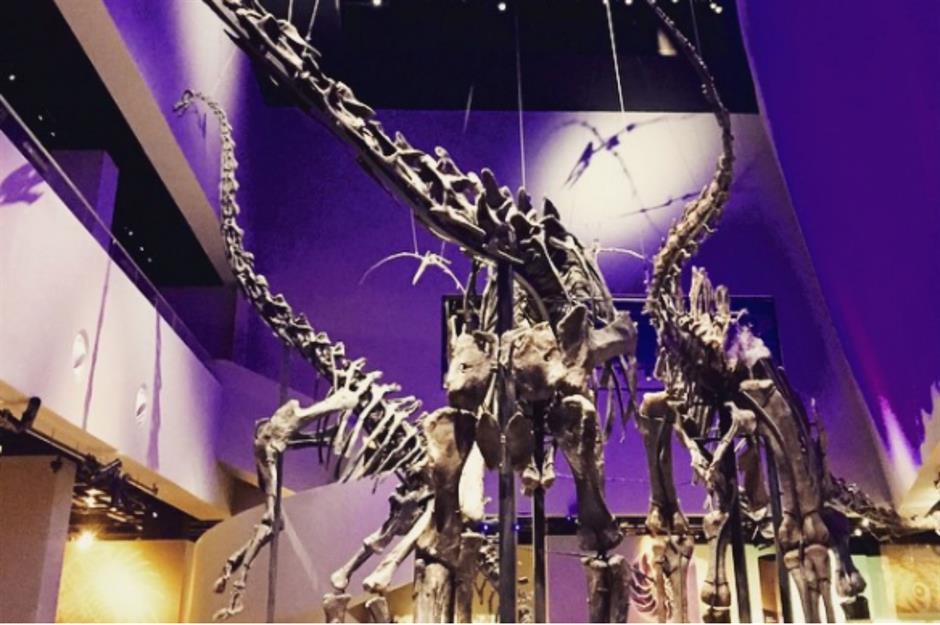
The National University of Singapore bought the trio from Dinosauria International, the Wyoming-based fossil company that found them for around $8 million to display in the Lee Kong Chian Natural History Museum. In today's money, that's the equivalent of around $11.5 million (£8.9m).
The three dinosaurs are the central feature of the museum, but it was a challenging task to get them settled in. Having been ferried across the sea and packed into crates on a huge container, it reportedly took a team of nearly 30 museum experts, movers, and staff two weeks of 12-hour days to assemble them.
Hector the Velociraptor: $12.4 million (£9.6m)

In 2015, self-taught dinosaur hunters Jack and Roberta Owen unearthed a Deinonychus antirrhopus skeleton in Montana’s Wolf Canyon. Translated, the dinosaur's name means "terrible claw", and it was the inspiration for the terrifying Velociraptor dinosaurs in the Jurassic Park film franchise (pictured).
The well-preserved skeleton measured almost 10 feet (3m) long, contained 126 fossilised bones, and dated back around 115 million years. It was aptly nicknamed "Hector", after the mighty Trojan warrior.
Hector the Velociraptor: $12.4 million (£10.1m)
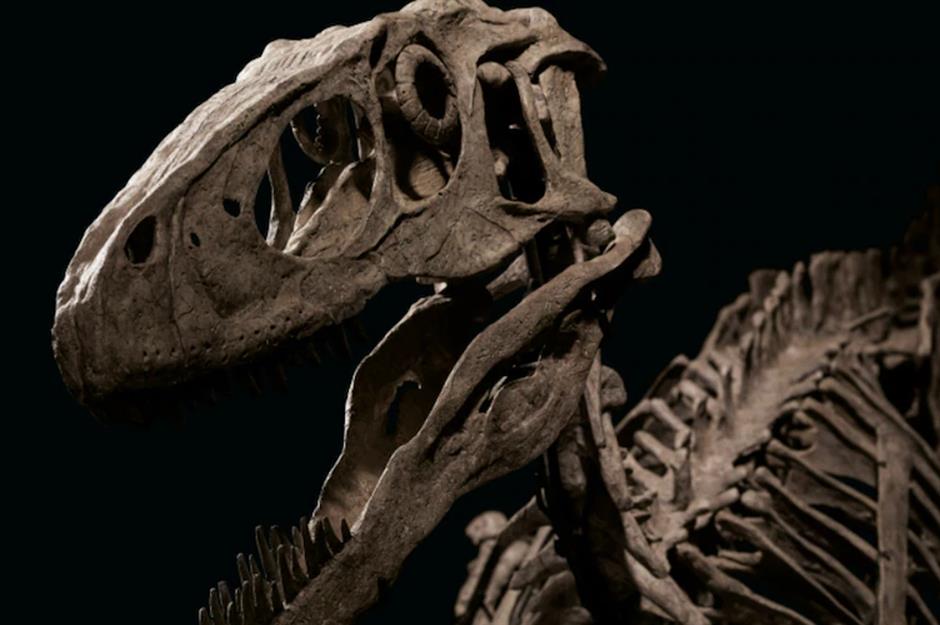
The skeleton was auctioned in 2022 at Christie's and fetched $12.4 million (£9.6m), twice its guide price.
It's unknown whether this magnificent artefact will ever be displayed publicly or housed in a private collection.
Big Sue: $16.4 million (£12.7m)
A 67 million-year-old Tyrannosaurus rex dinosaur was discovered in 1990 on the Cheyenne River Indian reservation in South Dakota.
Palaeontologists Peter Larson and Sue Hendrickson discovered the specimen, which was nicknamed "Big Sue", although to this day, it's unknown whether the dinosaur was male or female.
Big Sue: $16.4 million (£12.7m)
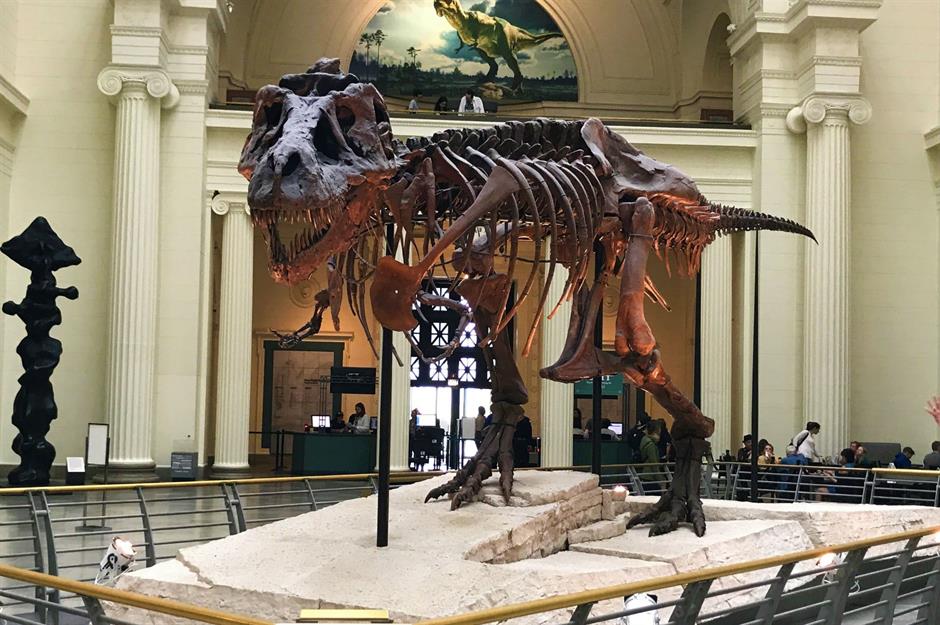
Following a huge dispute over where Big Sue should be housed, with many worried the discovery would be bought by a private collector and not made available for research or viewing by the general public, the Field Museum in Chicago began raising funds.
With the help of sponsorship from corporations, including Walt Disney Parks and McDonald’s, in 1997 the Field Museum bought Big Sue for $8.4 million at Sotheby’s, the equivalent of $16.4 million (£12.7m) in today's money. At the time it was the highest amount ever paid for a fossil at auction.
Stan the T-rex: $38.6 million (£29.9m)
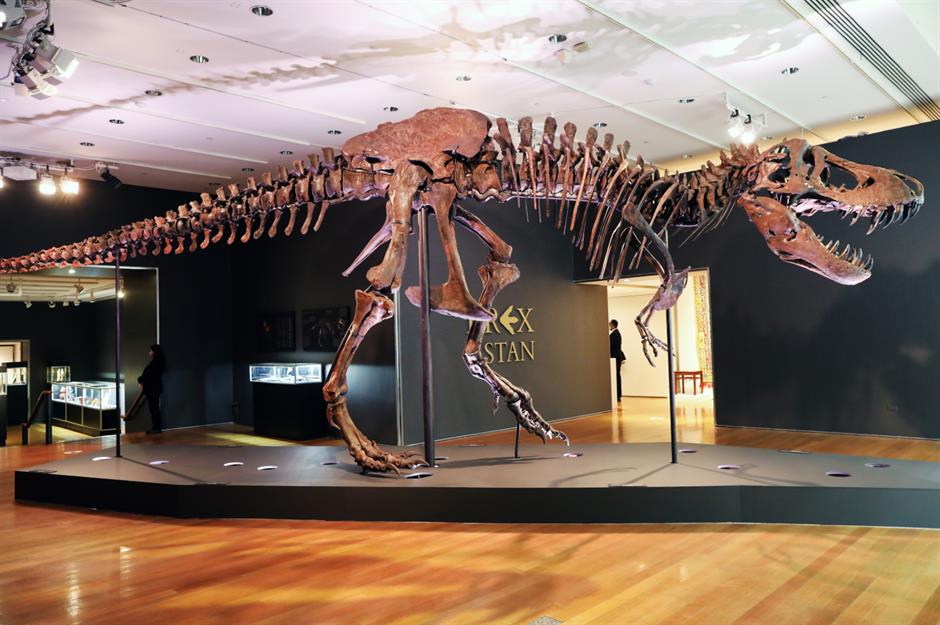
Named after the palaeontologist who discovered him, "Stan" is one of the most complete Tyrannosaurus rex skeletons ever found. First discovered by Stan Sacrison in 1987 in Hell Creek formation in the US, the bones were initially misidentified as those of a Triceratops.
In 1992, visiting palaeontologists began excavating the bones and realised he was in fact a Tyrannosaurus rex. The excavation and restoration of the skeleton took 30,000 hours to complete, after which he was put on a custom mount and displayed to the public in South Dakota.
Stan the T-rex: $38.6 million (£29.9m)
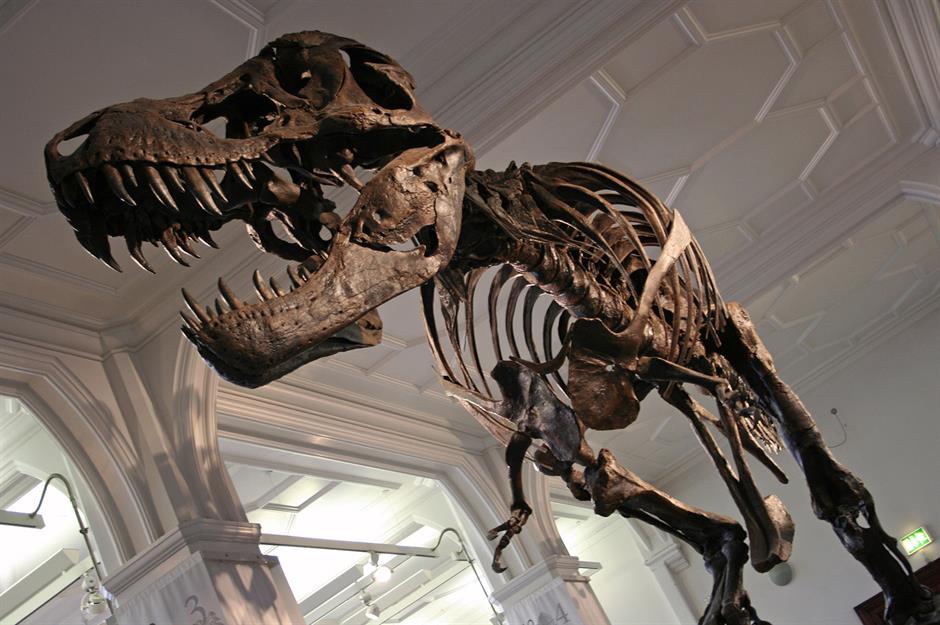
The skeleton, which stands 13 feet (4m) high and 40 feet (12.2m) long, including the tail, went up for auction at Christie's in New York in October 2020. With an estimated sale price of around $8 million, Stan was expected to become one of the most expensive dinosaurs ever sold.
In fact, Stan defied all predictions and sold for a then record-breaking $31.8 million, the highest price ever achieved by a fossil and the equivalent of $38.6 million (£29.9m) in 2024 money. Two years later, Abu Dhabi's Department of Culture and Tourism confirmed they had acquired Stan and were planning on displaying the fossil at a new museum of natural history scheduled to open in 2025.
Apex the Stegosaurus: $44.6 million (£34.5m)
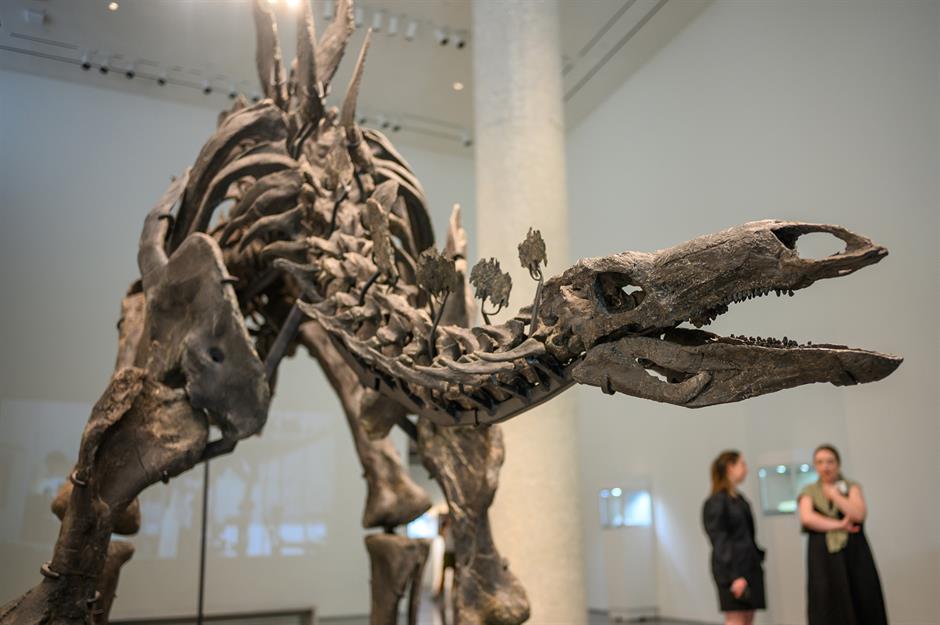
Fascinated with dinosaurs from an early age, Jason Cooper turned his childhood dreams into reality when he became a professional fossil hunter. Based in an area of Colorado in the US rich with fossils, Cooper has discovered more than his fair share of dinosaurs over the years, but a walk on his 45th birthday in 2022 turned his world upside down.
After spotting a femur bone sticking out of a rock, Cooper knew he was onto something big. A painstaking excavation process eventually revealed a 70% complete stegosaurus fossil measuring 11 feet (3.4m) tall and 27 feet (8.2m) long, dimensions that led Cooper to name his discovery "Apex".
Apex the Stegosaurus: $44.6 million (£34.5m)
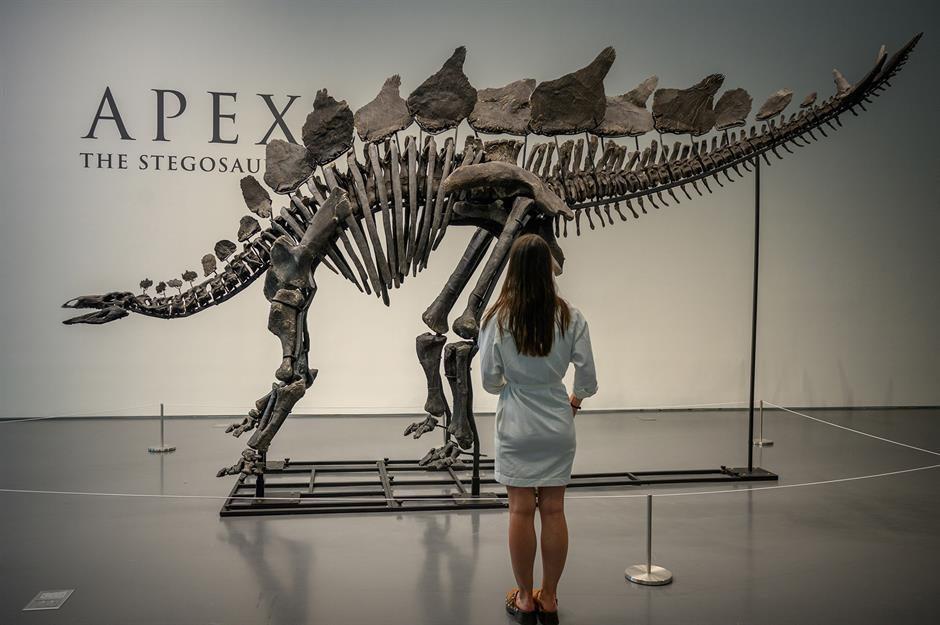
In July 2024, Apex went up for auction at Sotheby’s in New York and was expected to fetch between $4 million and $6 million. However, after fierce bidding involving seven buyers, the hammer finally came down on a staggering final bid of $44.6 million (£34.5m).
The buyer has since been revealed as hedge fund billionaire Ken Griffin, who has indicated that he'd like the 150 million-year-old fossil to go on public display in the US. "Apex was born in America and is going to stay in America!" Griffin reportedly said.
Now discover the amazing TV and movie memorabilia that fetched a fortune at auction
Comments
Be the first to comment
Do you want to comment on this article? You need to be signed in for this feature
Most Popular
Features How Michael Jackson's children boost their bank balances